[ad_1]
The Radeon RX 6700 XT is here, and once again, XFX returns with an absolutely spectacular custom spin on AMD’s new GPU—if you have room for it in your case, that is.
The $570 XFX Radeon RX 6700 XT Merc 319 costs $90 more than the reference card (and will no doubt sell for much more than that on the street during today’s crippling GPU shortage), but you get a lot for your cash: A big, bold, barn-burning graphics card capable of fueling no-compromises 1440p gaming experiences without making a peep. Seriously, this graphics card is downright inaudible. It looks amazing too, with one of the cleanest and most aesthetically pleasing custom designs in recent memory.
Let’s dig in.
XFX Radeon RX 6700 XT Merc 319 specs, features, and design
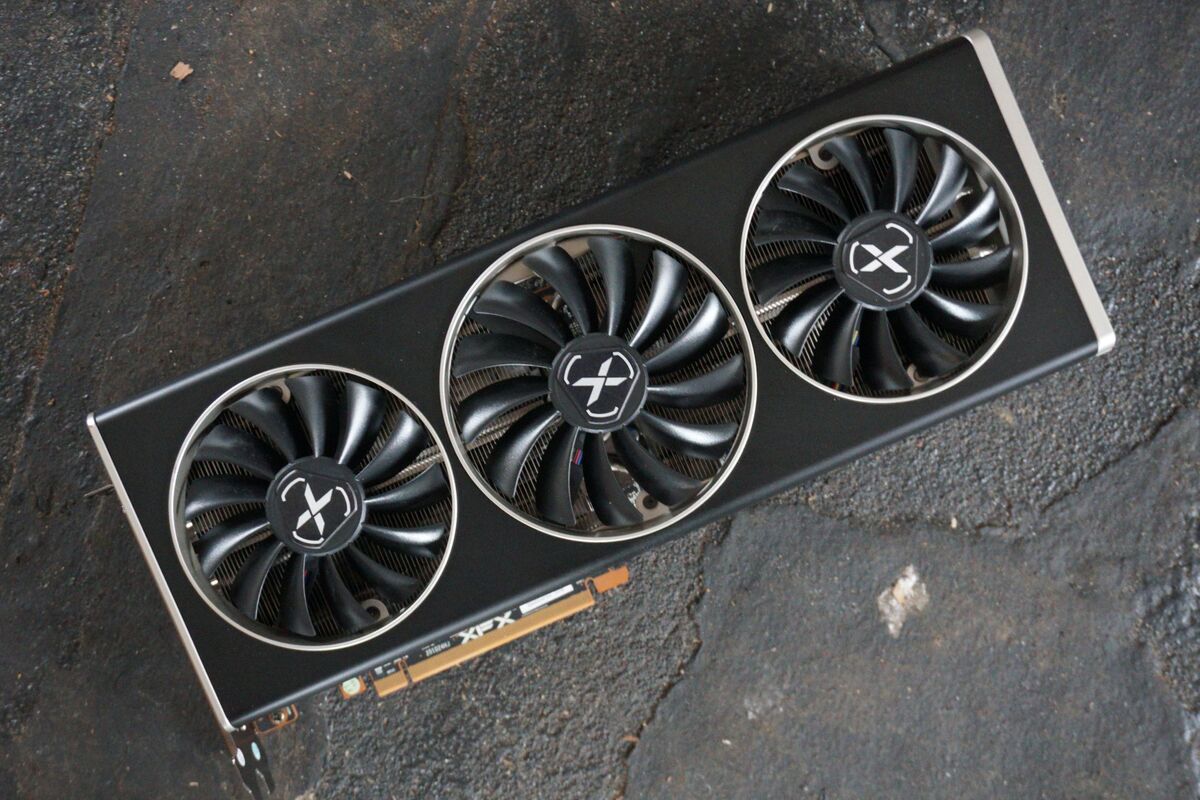 Brad Chacos/IDG
Brad Chacos/IDGThe XFX Merc 319 is built around the same “Navi 22” GPU as all Radeon RX 6700 XT models (including the Sapphire Nitro+ we reviewed yesterday). That means it includes screaming-fast clock speeds, support for Smart Access Memory and real-time ray tracing, access to all of AMD’s modern Radeon Software features, and an ample 12GB of GDDR6 memory bolstered by 96MB of ultra-fast on-die Infinity Cache.
For a deeper look at the best new features found in the Radeon RX 6000-series, be sure to check out our RDNA 2 deep dive. (RDNA 2 is the name of the energy-efficient graphics architecture powering AMD’s latest GPUs.) Here’s a refresher on the Radeon RX 6700 XT’s specific technical details next to the RX 5700 XT it’s replacing:
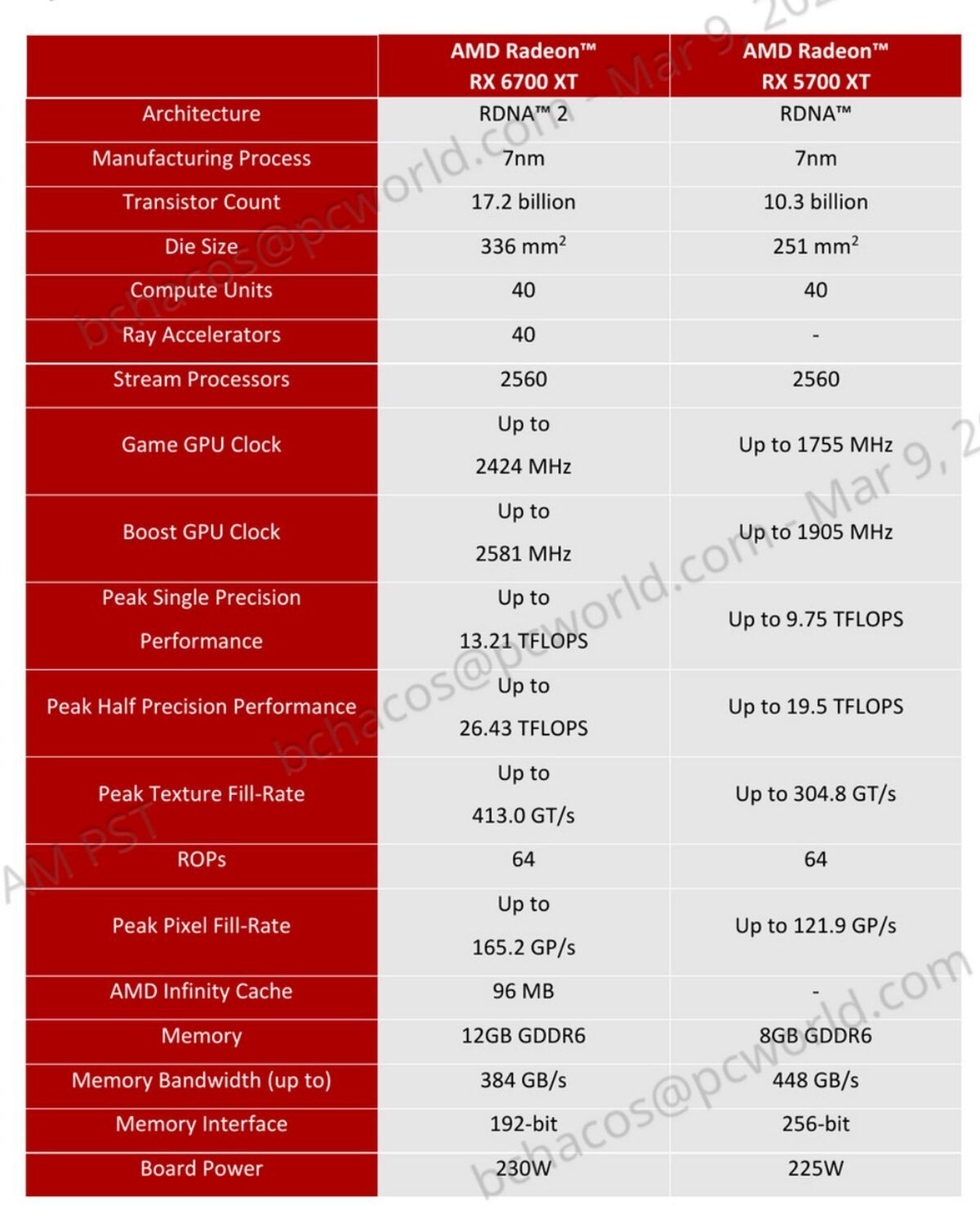 AMD
AMD…and here’s a rundown of the XFX Merc 319’s particular product specifications.
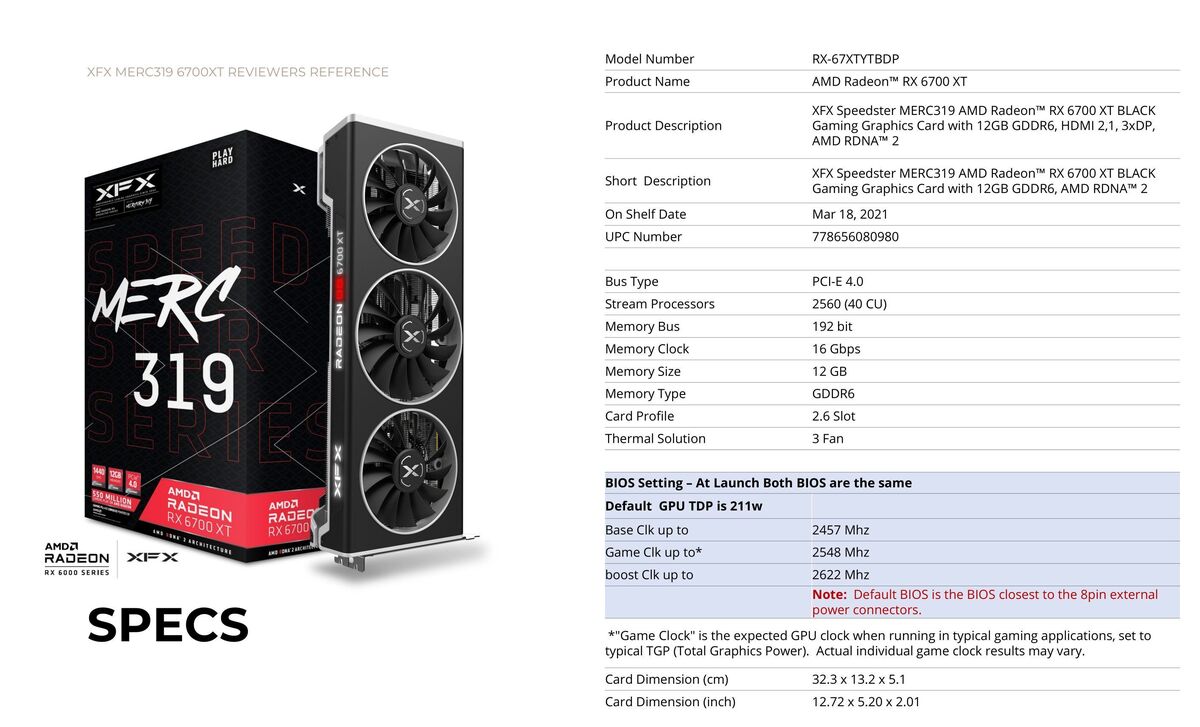 XFX
XFXXFX tuned its flagship RX 6700 XT variant to run faster than the reference version, with Game Clock speeds rated up to 2,548MHz and a higher 211-watt power limit, up from the default 186 watts. We observed the card actually landing close to those speeds, with the GPU clock hovering between 2,535MHz and 2,548MHz during a looped F1 2020 run.
As you’ll see in our benchmarks, that from-the-factory boost made no practical difference in gaming frame rates, but it’s an encouraging sign for people who want to put the Merc 319’s beefy custom cooler to work with a manual overclock. The card comes with a pair of 8-pin power connectors, up from the 8-pin and 6-pin reference configuration, to further assist in those endeavors.
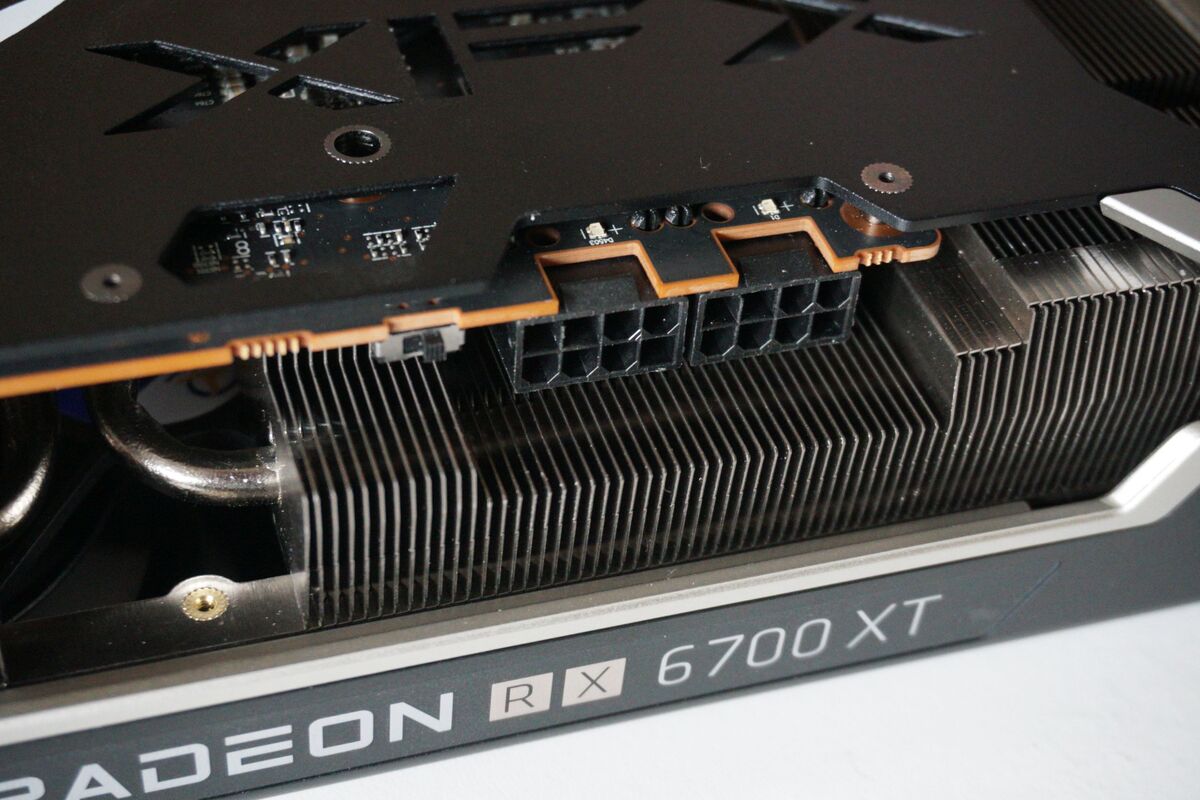 Brad Chacos/IDG
Brad Chacos/IDGThe XFX Merc 319’s power connectors, with the tiny dual-BIOS switch just to their left.
Speaking of overclocking, XFX helpfully outfitted the Radeon RX 6700 XT Merc 319 with a dual-BIOS switch. Usually vendors equip each of the toggles with different BIOS profiles—one faster and with a higher power limit, the other slower with lower noise levels. XFX decided to slap the exact same high-performance BIOS on both toggles, but it makes sense in this case because the Merc 319 is utterly silent even at full tilt. You can use the performance tuning options in AMD’s native Radeon Settings application to rejigger either BIOS with different settings if you’d like, however.
 XFX
XFXA blowout rendering of the XFX RX 6700 XT Merc 319’s custom cooler.
No matter how you decide to run the GPU, this graphics card is up to the task. The Radeon RX 6700 XT model brings back the design of XFX’s 6800 XT Merc 319 to stunning effect. We dove into the cooling system in greater detail in that review, but at a high level, XFX equipped the card with a full 7+2 phase digital PWM power design to push the GPU. The company then focused heavily on heat dissipation, giving the Merc 319 a trio of fans with 13 blades each: Dual 100mm fans bracket a slightly smaller, slightly offset 92mm fan in the middle.
A copper-plated cold plate contacting the GPU connects to five 6mm heat pipes that snake throughout a utterly massive 2.6-slot heat sink. XFX crammed thermal pads over the GDDR6 memory, VRMs, and other key components to increase heat dissipation even more, and went so far as to put thermal pads between the backside of the PCB and the solid metal backplate so that it can help keep things cool. It’s remarkably effective, besting even the excellent thermal results we witnessed with the Sapphire Nitro+ RX 6700 XT.
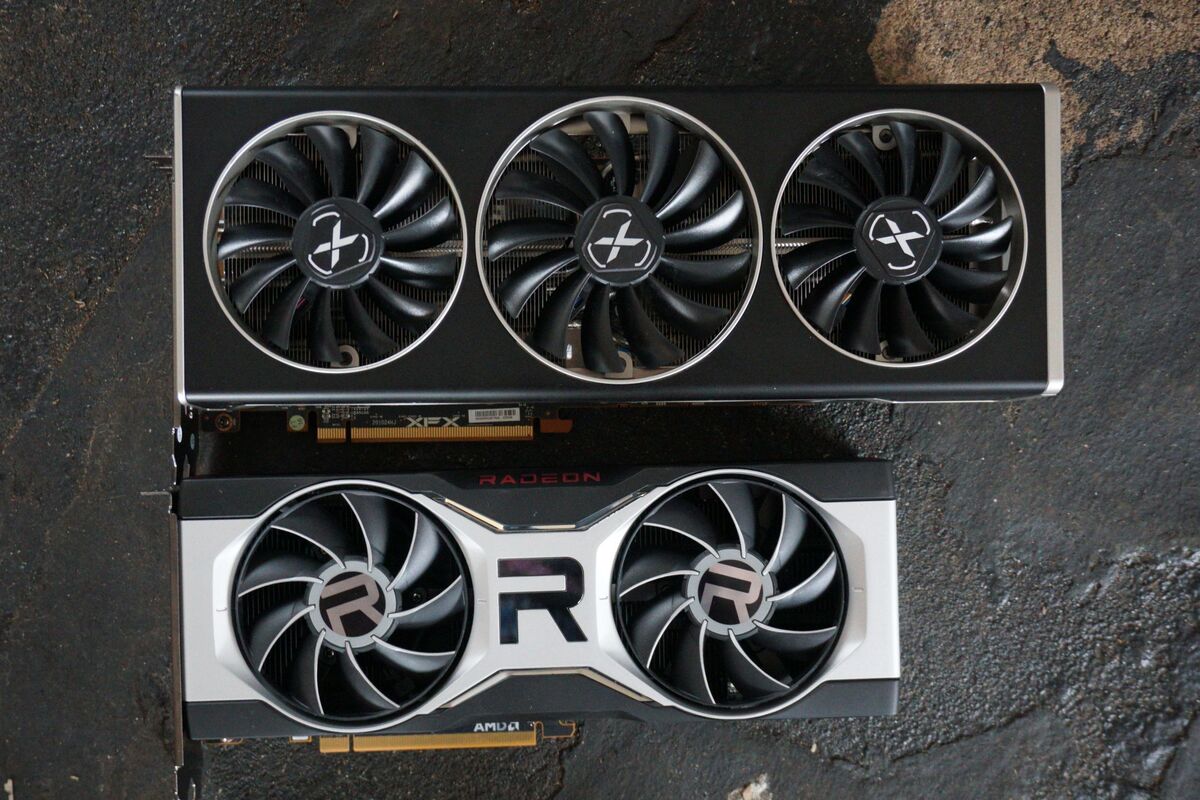 Brad Chacos/IDG
Brad Chacos/IDGThe Merc 319 is substantially larger than AMD’s reference Radeon RX 6700 XT.
That backplate features several large cutouts to maximize airflow, and it helps the graphics card stand strong, too. The XFX Radeon RX 6700 XT Merc 319 is humongous, measuring 3 slots deep and nearly 13 inches long. You’ll definitely want to ensure it’ll fit in your system before you buy it. XFX’s rigid aluminum backplate and cast shroud help protect against the sort of bending and sagging you sometimes see with large graphics cards.
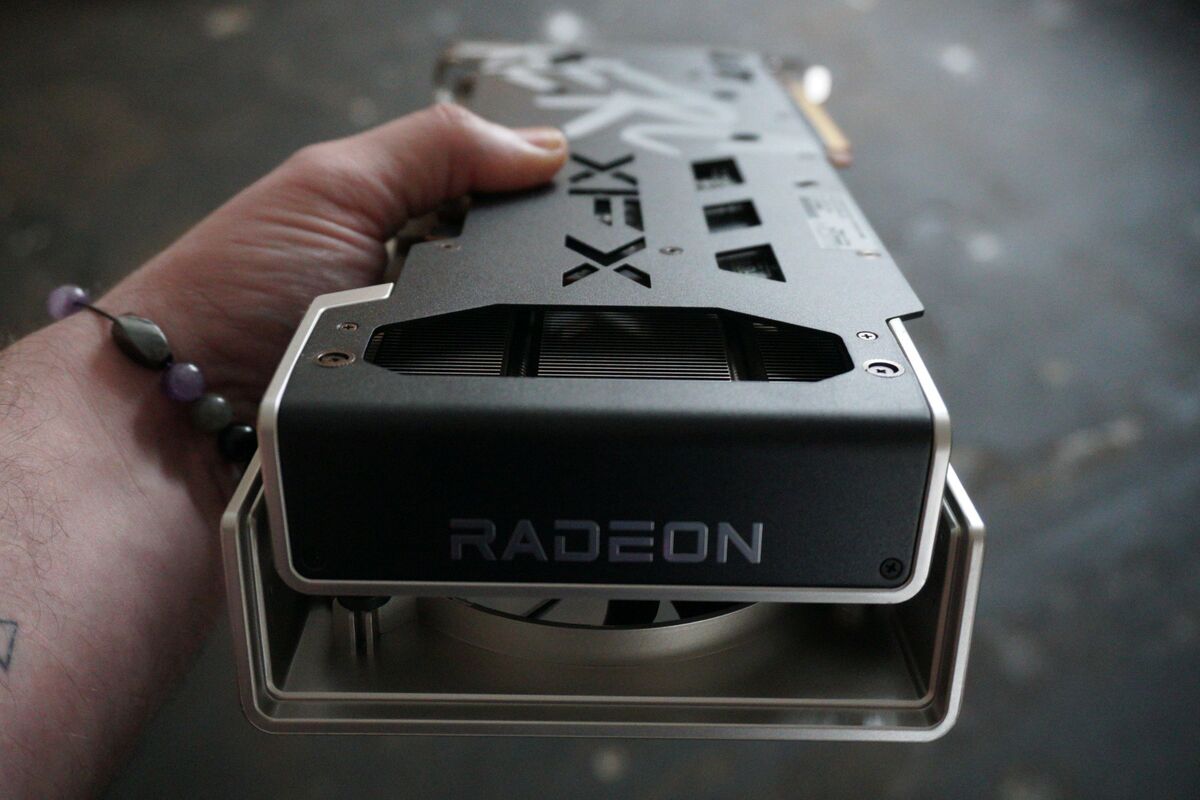 Brad Chacos/IDG
Brad Chacos/IDGThe Merc 319 remains jaw-droppingly gorgeous, too. Here’s what we said in our evaluation of the 6800 XT version, and it holds just as true for this 6700 XT iteration:
“XFX is known for its aggressive-looking designs. Last generation’s Thicc models, for instance, evoked the feel of muscle cars of yesteryear. The Merc 319 refines that aesthetic. I love the industrial black-and-silver vibe of this card, and RGB haters won’t find an ounce of unicorn puke anywhere.
The XFX and [Radeon RX 6700 XT] logos on the side are illuminated though, and in a surprisingly striking fashion. Their white lights (red, for the “RX” lettering) shine much more cleanly and clearly than the logos do on rival graphics cards—sort of like the difference between standard car headlights and LED headlights. These pictures don’t capture how nice it looks.”
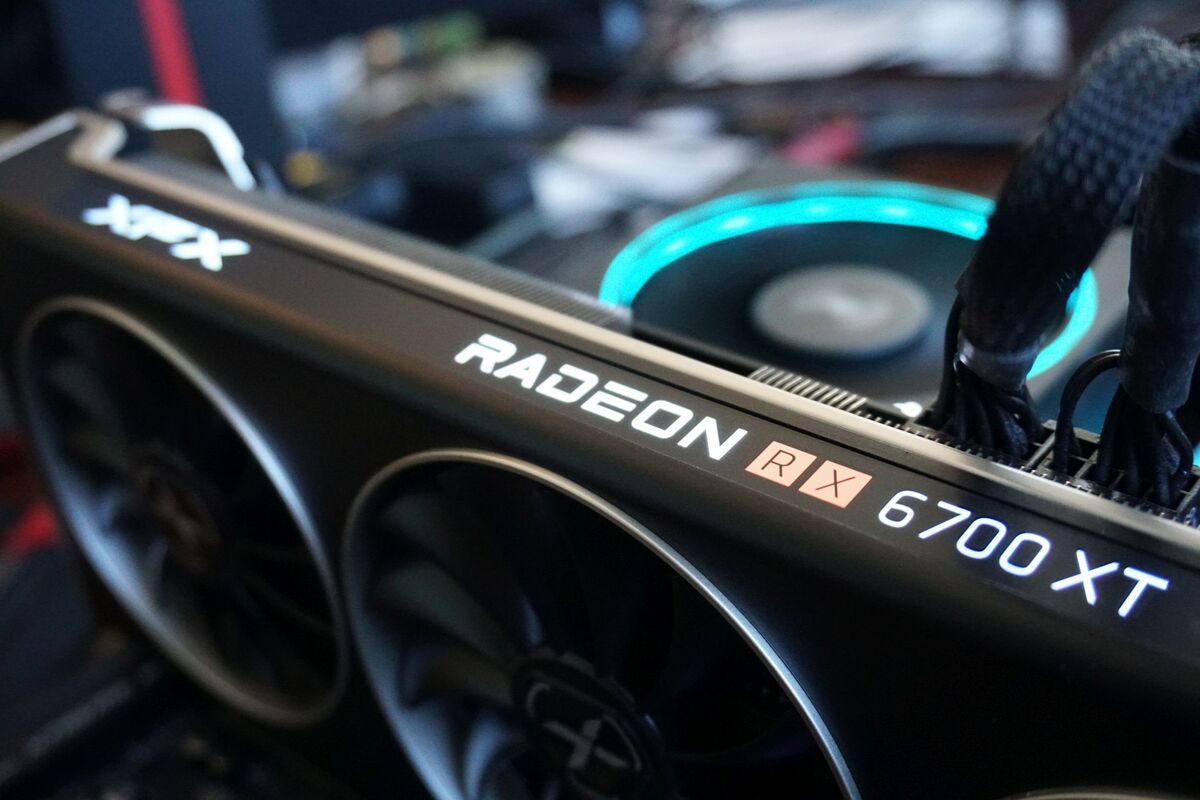 Brad Chacos/IDG
Brad Chacos/IDG“Then there’s the logo. XFX emblazoned the word “Merc” in big, stylized white letters across the top of the backplate. It definitely fits the vibe of the card, as well as XFX’s general branding, but if you prefer your hardware to look less “edgy,” you might not appreciate it. There’s no way to avoid seeing it if your case includes a tempered glass side panel. Me? I dig it. Your mileage may vary.”
Finally, the XFX Merc 319 sticks to the same video connections as AMD’s reference card, bracketing a single HDMI 2.1 port inside a trio of DisplayPorts. Now let’s get to the benchmarks.
Next page: Our test system, benchmarks begin
[ad_2]
Source link